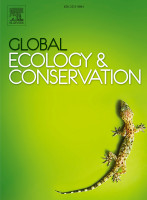“Mountain biking (MTBing) has become one of the most popular recreational activities and this trend is further amplified with the enhanced use of electrically assisted mountain bikes (eMTBing). While increasing user frequencies are intensifying social and environmental conflicts, the consequences of MTBing in and for the environment are insufficiently understood. The aim of this review is to outline the ecological impacts of conventional mountain biking and to highlight potential differences and consequences arising with the use of eMTBs.
The results systematically summarise how MTBing can lead to immediate responses of animals, changes in habitat use and diurnal activity patterns of wildlife, a reduced reproductive success, seed dispersal, trampling damage on flora, vegetation changes in areas adjacent to trails, as well as soil compaction, exposure and erosion. The increasing use of eMTBs will cause a larger frequency and spatial cover by bikers and therefore a rising number of trails. Wildlife will be more affected when off-trail riding increases or when the use of so far less frequented areas or times will intensify. Vegetation and soil will be more affected, when new trails are created. Both aspects are more likely with the switch to eMTBing as steep slopes are climbed faster and more frequently. However, these direct effects of MTBing may not be associated with negative long-term consequences for ecosystems as those depend on the specific species or subjects of protection, the environmental context and possible interactions with other human activities. Overall, long-term consequences for plants and animals are difficult to assess and thus general patterns of how the direct effects of (e)MTBing translate into consequences for population dynamics are yet missing. It is essential to improve the knowledge regarding long-term effects of (e)MTBing on the population and ecosystem level and societal debates regarding (e)MTBing need to differentiate effects relevant for animal welfare from implications for nature conservation.”

